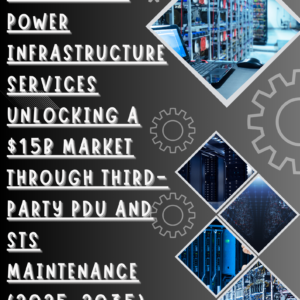1. Executive Summary
-
- Key trends in Workload Automation and iPaaS
- Market size projections and growth rates
- Critical factors shaping the industry landscape
2. Introduction to Workload Automation
-
- Definition and scope of Workload Automation
- Evolution from traditional job scheduling to modern automation platforms
- Importance in enterprise IT environments
3. Competitive Landscape Overview
a. Key Players in Workload Automation
-
- Established vendors (e.g., Redwood Software, BMC, Stonebranch)
- Emerging players and disruptors
- Market share analysis and positioning
b. Competitive Differentiation Factors
-
- Technological capabilities and innovation
- Integration capabilities and ecosystem support
- Industry and use-case specializations
- Pricing models and total cost of ownership
4. Value Proposition of Workload Automation
-
- Operational efficiency and cost reduction
- Error reduction and process reliability
- Scalability and adaptability to changing business needs
- Compliance and governance benefits
- Enhanced visibility and control over IT processes
5. Key Product and Service Offerings
a. Core Workload Automation Features
-
- Job scheduling and orchestration
- Event-driven automation
- Self-service and no-code interfaces
- Reporting and analytics capabilities
b. Advanced Capabilities
-
- AI and machine learning integration
- Predictive analytics and intelligent automation
- Cloud-native and hybrid environment support
- DevOps and CI/CD integration
c. Service and Support Offerings
-
- Implementation and consulting services
- Training and certification programs
- Managed services options
6. Growth Trends and Market Opportunities
-
- Adoption trends across industries
- Geographic market expansion opportunities
- Emerging use cases driving growth
- Impact of digital transformation initiatives on demand
7. Integration Platform as a Service (iPaaS) and its Relation to Workload Automation
a. Overview of iPaaS Solutions
-
- Key players (e.g., MuleSoft, Boomi, Workato)
- Core functionalities and use cases
b. Convergence of Workload Automation and iPaaS
-
- Complementary capabilities and synergies
- Integration challenges and solutions
- Future of unified automation and integration platforms
8. Technological Advancements Shaping the Industry
-
- Impact of cloud computing and containerization
- Role of AI and machine learning in automation
- Edge computing and IoT integration
- Blockchain and distributed ledger technologies in process automation
9. Customer Adoption Patterns and Case Studies
-
- Industry-specific adoption trends
- Success stories and ROI examples (generalized)
- Common implementation challenges and solutions
10. Regulatory and Compliance Considerations
-
- Data privacy and security implications
- Industry-specific compliance requirements
- Global regulatory trends affecting automation technologies
11. Future Outlook (2025-2035)
-
- Projected evolution of Workload Automation platforms
- Emerging technologies that could disrupt the market
- Long-term impact on enterprise IT landscapes
12. Challenges and Opportunities
-
- Addressing skill gaps in automation technologies
- Balancing automation with human oversight
- Opportunities for innovation and market expansion
13. Strategic Recommendations
-
- Key considerations for vendors in product development
- Best practices for enterprises in selecting and implementing solutions
- Investment opportunities in the Workload Automation space
14. Conclusion
-
- Summary of key insights on Workload Automation market
- Critical success factors for vendors and adopters
15. Appendices
-
- Glossary of Workload Automation and iPaaS terms
- Comparison matrix of major Workload Automation solutions
- Timeline of significant industry developments
#WorkloadAutomation #iPaaS #Automation #DigitalTransformation #EnterpriseIT #CloudComputing #AI #MachineLearning #BusinessProcessAutomation #Integration #DataGovernance #OperationalEfficiency #CostReduction #DevOps #PredictiveAnalytics #JobScheduling #Scalability







